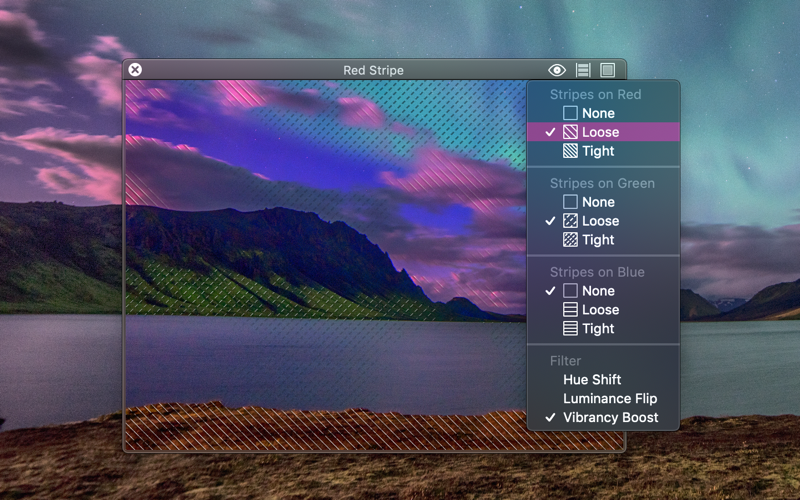
Red Stripe is a tool to help people with color blindness differentiate colors. Move the filter window over something on screen to add stripes over certain colors or to apply a combination of color filters.
The window is totally transparent to colors as well as to your mouse pointer. You can at all times click through the filter window to reach apps and windows that are below it.
STRIPES
Oblique stripes on red, dashed stripes on green, horizontal stripes on blue.
Pick the best stripes that best help you.
Stripes are visible by default on greens and reds. Those are useful for red-green forms of color blindness which is most common (deuteranopia, protanopia). Stripes on blue which are useful for those with a blue-yellow color blindness (tritanopia), but those are not enabled by default.
Stripes are good to distinguish other colors too. Stripes are more or less pronounced depending on whether the tint is closer to red, green, or blue. Stripes can be hidden, or show up with loose or tight spacing.
HUE SHIFT
Red becomes cyan, green becomes magenta, blue becomes yellow, yellow becomes blue. This 180° rotation of the color wheel switches problematic colors to those you are more sensitive to.
LUMINANCE FLIP
Sometimes, darkness makes colors harder to see. This filter makes dark colors become light and light colors become dark. The hue is left unchanged: what’s red stays red. Although if you want a fully negative image, you can combine with Hue Shift.
VIBRANCY BOOST
Increase color saturation and slightly darken uncolored areas. This may help for colors that are too subtle.
PERFORMANCE
Filter speed is good enough to allow a video to play through it. If needed, you can adjust the refresh speed to save energy or reduce the lag.
FOLLOW THE MOUSE
You can also tell Red Stripe to follow the mouse pointer and display its surroundings. This will let you compare the filtered view with the unaltered original under the pointer. This can also be useful to avoid moving the window.



